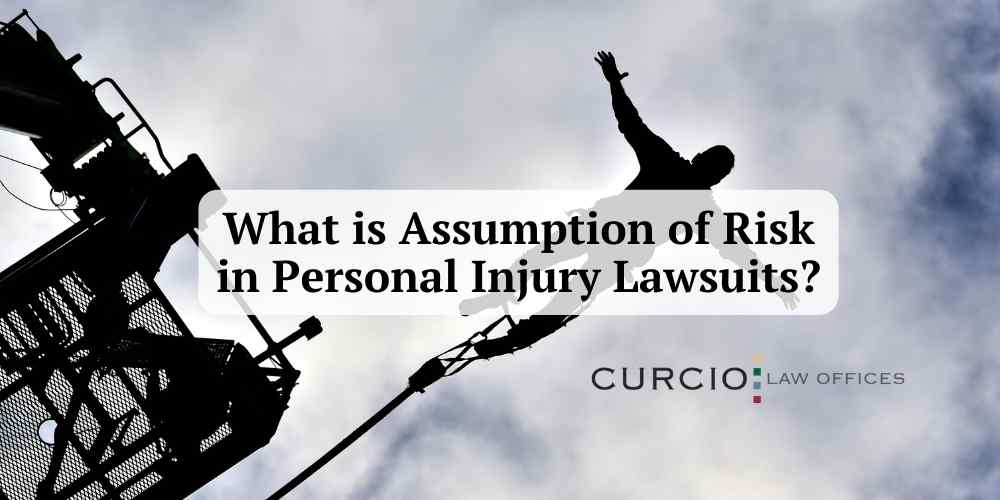It may not seem like it, but many of us engage in dangerous activities daily. Everything carries a certain amount of risk. This idea is known as the “assumption of risk,” and it can be used as a defense in some personal injury claims. Below, we’ll detail what the assumption of risk is and the different forms it can take.
If you have been harmed while participating in an inherently dangerous activity, you need fierce legal representation in order to recover the compensation you deserve–and the Chicago personal injury lawyers and Chicago catastrophic injury lawyers at Curcio & Casciato are prepared to offer you just that. Call us at (312) 321-1111 to discuss your case with a legal professional from our team.
What is the Assumption of Risk Defense?
Assumption of risk, according to the Legal Information Institute, is a concept that comes up in almost every injury claim. In certain situations, some people may have a legal duty to protect others from a reasonable amount of harm.
The assumption of risk defense, or assumption of the risk defense, is a legal defense that defendants (those accused of being negligent) can use to defend themselves in a personal injury case. Assumption of risk asserts that the plaintiff (the injured person bringing the injury claim) engaged in a dangerous activity, which is why they were injured.
If the defendant claims that the plaintiff knew the particular risks inherent to an activity and engaged in that activity anyway, the defendant may be able to partially or completely avoid liability for the accident. This is the assumption of risk defense or assumption or the risk defense.
Example of Risk Assumption
Many situations involve some assumption of risk. The most common example of this is when attending a baseball game. While you’re sitting in the stands, you know that you may be at risk of being hit by a foul ball. The same can be said for contact sports, rock climbing, or scuba diving. But where do we draw the line when an inherent risk occurs? When someone needs a medical procedure, how far does the assumption of risk defense go?
In situations like this, it’s always a good idea to hire a Chicago premises liability attorney.

Express Assumption vs. Implied Assumption
Risk assumption, or assumption of the risk, comes in two main forms: express assumption of risk and implied assumption of risk. Let’s examine the differences between these two kinds of risk assumptions and look at examples of situations where they may apply.
Express Assumption of Risk
Express assumption of risk refers to situations in which someone signs a written agreement before participating in a certain activity. If that person is injured as a result of a known risk or a specific risk that was included in their agreement, then the injury victim would be fully responsible for their own injuries.
An example of express assumption would be if a person pulled a hamstring while using the workout equipment at their local gym. If the injured plaintiff signed a liability waiver when they applied for their gym membership, then the gym can claim that the plaintiff knowingly assumed the risk of using their exercise equipment. If the contract did not list that particular risk, however, the gym may be found liable for damages.
Implied Assumption of Risk
Implied assumption of risk happens when someone participates in a risky activity but they do not sign an agreement consenting to the activity. When someone engages in an activity, it is assumed that they willingly agree to engage in that activity, even if they don’t agree in writing.
For example, if someone decides to go rock climbing on the side of a mountain, they most likely understand the inherent risks of scaling a mountain and agree to participate in the activity despite those risks.
Primary and Secondary Assumption of Risk
Implied risk exists in many situations and can be further broken down into primary and secondary risk assumptions. Below are the differences between primary and secondary risk assumptions and examples of both.
Primary Assumption of Risk
The primary assumption of risk, or risk primary assumption, occurs when someone participates in reckless conduct or a dangerous activity, knowing that no one owes them a duty of care.
One of the most common examples of a primary assumption of risk is when playing a contact sport like football. A player can’t sue their football team because they tore their ACL. They chose to play the sport, and the plaintiff assumed the risks of playing football.
Secondary Assumption of Risk

A secondary assumption of risk, or risk secondary assumption, occurs when someone participates in an activity with inherent dangers, but another party owes them a duty of care.
For example, if someone is in a grocery store and sees a wet floor sign but chooses to ignore it and walk on it, they have assumed the risk of slipping and falling due to the wet floor.
In the secondary assumption of risk cases, the plaintiff’s harm was partially their fault, but they can still sue for compensation by law. The plaintiff may receive a reduced amount of compensation due to the doctrine of comparative negligence.
What is Modified Comparative Fault?
Comparative negligence, also known as comparative fault, is a legal doctrine that some states employ in personal injury cases. Comparative fault is used when the plaintiff is at least partially responsible for their own injuries.
In Illinois, we have a no-fault liability system, meaning that victims will file a claim with their insurance company for compensation in cases of negligent conduct. However, that may not be enough to cover their injuries and other expenses, such as a necessary medical procedure.
If a plaintiff is less than 50% responsible for their own injuries, they can pursue compensation for their losses.
How Does Comparative Fault Relate to the Assumption of Risk?
While the assumption of risk can sometimes be a complete defense against negligence claims, comparative fault can help hold the defendant at least partially responsible for their actions.
In cases where risk defense is assumed, victims can use comparative negligence to show that they were only partly to blame for the accident and that the defendant was mostly to blame. Even if the plaintiff acted recklessly, they may only be 30% responsible for their injuries, allowing them to recover compensation for at least 70% of their losses.
How Can a Personal Injury Attorney Help Prove Negligence in an Assumption of Risk Case?

In some cases, the assumption of risk doctrine can act as a complete bar to compensation. To receive compensation, the plaintiff must show that the defendant owed them reasonable care during the accident.
That’s why victims of negligence should hire a personal injury lawyer to help show that the defendant was at least mostly responsible for their injuries.
The skilled personal injury attorneys at Curcio & Casciato are prepared to help injury victims show that the defendant’s negligence harmed them. We can also help prove negligence in cases involving serious injury or wrongful death so the victim’s family can receive compensation for their losses.
Be sure to consult with a Chicago wrongful death attorney to learn more about your legal options.
Call an Experienced Personal Injury Lawyer at Curcio & Casciato Today
If you have been injured while participating in something dangerous, you may still be able to recover compensation for your injuries. The experienced legal professionals at Curcio & Casciato can evaluate the facts surrounding your case and gather evidence to help prove that the defendant owes you compensation. Call us at (312) 321-1111 or contact us online to schedule a free consultation with a liability attorney on our team.



